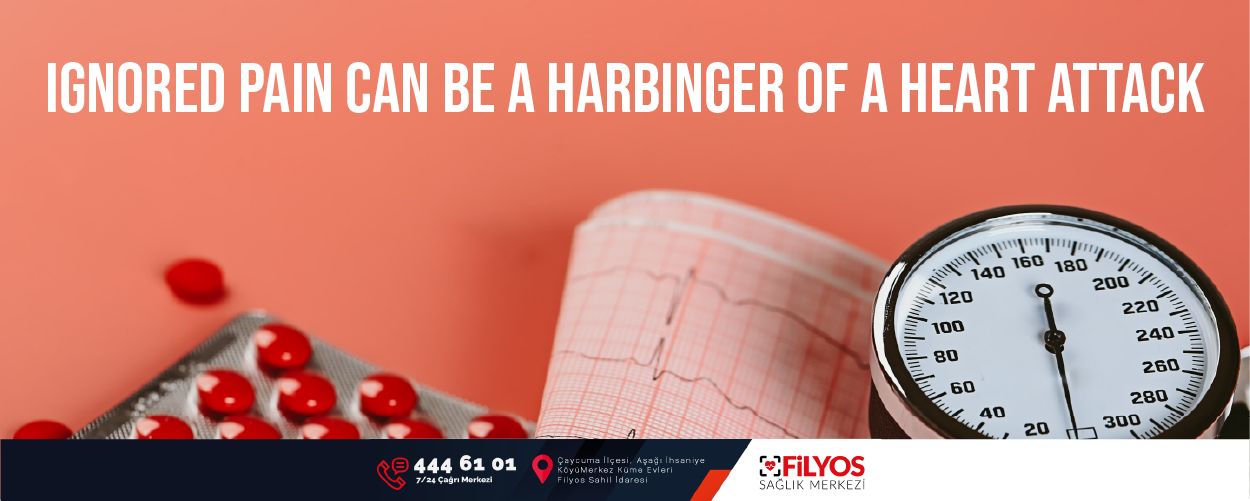
IGNORED PAIN CAN BE A HARBINGER OF A HEART ATTACK
A heart attack is a blockage of the arteries supplying the heart, which results in damage to the heart tissue as a result of the inability to deliver the oxygen necessary for the heart muscle to function to the cells. For this to occur, the vessel wall must be damaged and substances such as cholesterol and fat must accumulate and plaque structures must form. Over time, the plaque builds up on the vessel walls and this progresses with conditions such as hypertension, diabetes, high cholesterol and obesity. If timely intervention is not carried out and the heart tissue is not nourished, the heart’s blood pumping function is impaired and heart failure may develop as a result.
Pain in various parts of the body, which may seem simple, can sometimes be a sign of serious problems. The most common pain in a heart attack is a pressing and compressive pain in the midline of the chest involving the left arm. The pain, which feels like a stabbing sensation in the chest, is considered to be a serious pain in our country, but it can usually be caused by a simple muscle pain or a lung infection.
In some patients, the symptoms of a heart attack may also appear as pain in both wrists and arms, only in the right arm or in the jaw. Nausea and vomiting can also be a sign of a heart attack. Especially in elderly patients, the possibility of a heart attack should be considered in case of nausea and pain. Many elderly patients who apply to the hospital with these complaints are diagnosed with a heart attack as a result of the examination. In addition, since the sensation of pain decreases in elderly patients with diabetes, it should be kept in mind that any illness and complaint seen in these patients may be a serious problem. Some patients consult a dentist only with jaw pain without chest pain and think that the problem is caused by teeth and gums. However, tooth/jaw pain that causes severe restlessness, weakness and fatigue, accompanied by cold sweating may indicate a heart attack. Patients in this situation should be examined by a specialist physician.
Extra risk factors that can lead to vascular occlusion; hypertension, diabetes, high cholesterol, obesity, inactivity, stressful life, smoking, etc. all conditions can trigger a heart attack. Some of these conditions can be controlled with medication and lifestyle changes, but some conditions cannot be controlled by external intervention; such as patient age, family history, genetic predisposition. If a person has a history of heart attack, especially if his/her parents and first-degree relatives have a history of heart attack at the age of 50-60 or younger, he/she should consult a specialist physician at the slightest discomfort or suspicion of symptoms.
A heart attack is a serious health problem that threatens human life, and one should always be cautious against heart attacks and strive to reduce possible risk factors.
